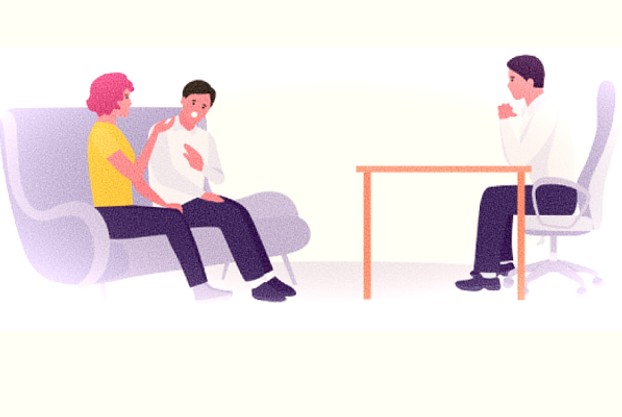Excitement About Aim Point Counseling
Excitement About Aim Point Counseling
Blog Article
Little Known Facts About Aim Point Counseling.
Table of ContentsGetting My Aim Point Counseling To WorkAim Point Counseling Can Be Fun For AnyoneThe Best Guide To Aim Point CounselingThe Of Aim Point CounselingLittle Known Questions About Aim Point Counseling.Aim Point Counseling for Dummies
The longitudinal style involves a pre-treatment survey and two follow-up studies at 3- and 12-months post-intervention. The research study is embeded in eight Relationships Australia Victoria centres, throughout cosmopolitan, outer suburbs, and regional/rural sites. Relationships Australia, a non-government organisation, is the biggest copyright of pair therapy and relationship solutions in Australia.
In Australia, the average length of marriage prior to separation is 8.8 years, and about half of all divorces involve pairs with kids [1] These high prices of connection malfunction have actually been consistently associated with unfavorable health effects for both adults and youngsters following divorce/separation. These include seclusion from support networks, and lowered earnings and standard of living for both grownups and children [3], predicaments of loyalty over kids for men, and clinical depression and loss of identification for females [4,5]
Getting The Aim Point Counseling To Work
The results of separation and splitting up can be harmful, research suggests that high connection disharmony in intact pairs is additionally likely to have adverse results.
Study to day has recognized both couple and specific elements that may contribute to relationship disharmony. These include partnership contentment and commitment at the pair level, and depression at the individual level.
Some Known Details About Aim Point Counseling
Partnership contentment has actually been one of the most usual end result variable identified in greater than 200 assessments of couple therapy [11,12] Researches have found significant renovations in partnership contentment from pre- to post-treatment [13,14] and throughout one to two years adhering to therapy [15] In these studies, connection complete satisfaction was most frequently analyzed making use of the Dyadic Modification Range (DAS) [16] While the majority of research studies indicate improvements in connection complete satisfaction following couple coaching, they are limited by the examples and procedures utilized, largely short-term follow-up time frameworks, and evaluations that do not account for the dyadic nature of pair data - trauma counseling. Partnership dedication, based upon measures such as the Dedication Inventory (CI) [19], is another typically explored connection end result.
To summarise, research study suggests that couple-specific variables as well as specific elements may predict the results of pair counselling and relationship services. The causal instructions of these relationships, nevertheless, is much less clear. These monitorings are essential, considering that, to warrant and assist the application of connection solutions such as pair counselling, empirical proof must discover both the end results of connection solutions and the a knockout post factors that predict successful treatment.
There is a growing consensus that effectiveness research studies must be complemented by performance research study to best notify scientific method [ 29] The restricted efficiency research that exists to date suggests that couple coaching can enhance results such as relationship satisfaction [33,43], communication skills and basic wellness [44], at the very least in some European nations.

We presently understand little concerning the accounts of couples that seek out partnership education and learning compared to those that seek partnership coaching, or the outcomes of these programs. However, unscientific proof recommends that there might be substantial distress among at the very least some couples seeking partnership education. Connection education and learning programs differ from pair counselling as they are commonly extremely structured, performed in teams, and concentrate on a combination of 4 elements; recognition, responses, cognitive change, and abilities training [45]
Some Of Aim Point Counseling
Comments includes individuals completing questionnaires concerning their connection (e.g. steps of social problems), and obtaining information on what their ratings indicate. Cognitive-behavioural strategies advertise changing cognitions to assist in positive relationships. These may include promoting realistic attributions/expectations around negative partner practices [46] In abilities training, pairs attend lectures or presentations on partnership abilities, and practice these during facilitator-led tasks [ 45]
These results have continued for up to 4 years in some researches [47] These meta-analyses highlight limitations in the present literature on connection education. Especially, the majority of studies entailed pairs from upper socio-economic backgrounds who were not experiencing high relationship discord [47,48] This example account may not represent customers who commonly offer for relationship education and learning.
The 4-Minute Rule for Aim Point Counseling

Extremely little research study has examined the relative benefits of couple counselling and connection education programs. As clients are likely to self-select into these solution kinds, it is unclear whether characteristic relationship distress profiles present per solution kind, or certainly whether there is a communication between presenting account, solution type and outcome.
(https://issuu.com/a1mpoint)
Thus, we have actually included a 12-month follow-up to determine longer-term trends and results. The study utilizes a number of standardized end result steps because some prior investigations have been criticised for their absence of standard analysis [50] The usage of statistical evaluations that assume freedom of data, such as t-tests, or ANOVAs, has actually been widespread in previous research studies [ 44,49]
We recommend to use multi-level statistical modelling procedures that manage for the inter-dependence of pair data to analyze any treatment effects. The details aims of the ECC research study are to: 1. Map accounts of customers seeking area agency-based couple coaching vs. connection improvement programs in regards to socio-demographic and connection indications (such as connection satisfaction, partnership commitment, social troubles, and factors for attending), along with health and wellness (such as anxiety, basic health and wellbeing) and wellness solution usage (eg.
Establish whether pair counselling and connection education services boost three- and twelve-month outcomes for partnership satisfaction, commitment, and anxiety, utilizing statistical analyses ideal to couple data. marriage counseling. Determine the relative contributions of customer elements (individual and pair) and therapy/education elements to outcomes at 3- and 12-months, and to sustainability of end results over time.
Aim Point Counseling Things To Know Before You Buy
Multi-level modelling to establish pre-post differences, managing for dyadic (couple) degree. To add to the literature examining the effectiveness of community-based couple therapy.
Report this page